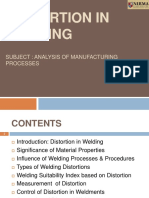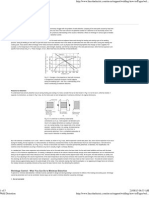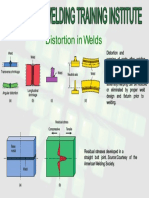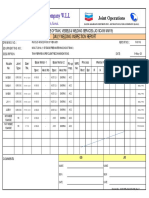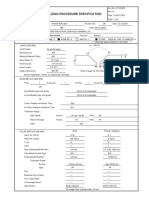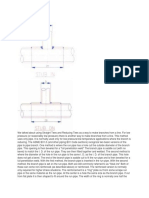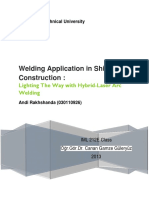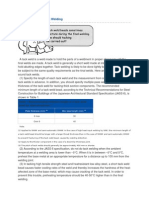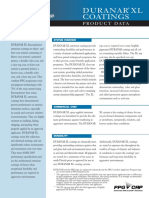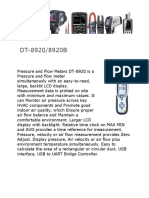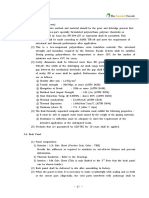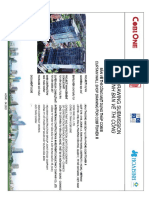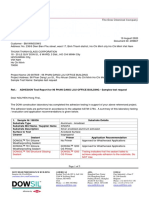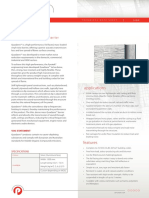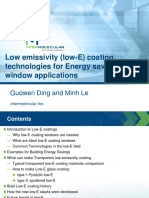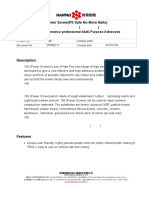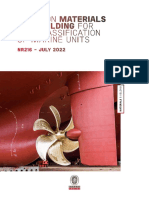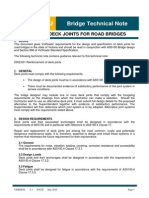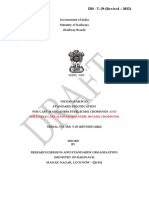0% found this document useful (0 votes)
199 views14 pagesDistortion Prevent and Control
1. Distortion occurs in welding due to non-uniform heating and cooling which causes thermal expansion and contraction. The main types of distortion are longitudinal shrinkage, transverse shrinkage, angular distortion, bowing, buckling, and twisting.
2. Factors that affect the degree of distortion include material properties, restraint, joint design, fit-up, and welding procedure. Proper design can help minimize distortion through techniques like eliminating welds, placing welds near the neutral axis, and reducing weld volume.
3. Guidelines for preventing distortion in design include eliminating welding when possible, balancing welds on opposite sides of the neutral axis, and keeping the weld cross-section as small as practical.
Uploaded by
TheAnh TranCopyright
© © All Rights Reserved
We take content rights seriously. If you suspect this is your content, claim it here.
Available Formats
Download as PDF, TXT or read online on Scribd
0% found this document useful (0 votes)
199 views14 pagesDistortion Prevent and Control
1. Distortion occurs in welding due to non-uniform heating and cooling which causes thermal expansion and contraction. The main types of distortion are longitudinal shrinkage, transverse shrinkage, angular distortion, bowing, buckling, and twisting.
2. Factors that affect the degree of distortion include material properties, restraint, joint design, fit-up, and welding procedure. Proper design can help minimize distortion through techniques like eliminating welds, placing welds near the neutral axis, and reducing weld volume.
3. Guidelines for preventing distortion in design include eliminating welding when possible, balancing welds on opposite sides of the neutral axis, and keeping the weld cross-section as small as practical.
Uploaded by
TheAnh TranCopyright
© © All Rights Reserved
We take content rights seriously. If you suspect this is your content, claim it here.
Available Formats
Download as PDF, TXT or read online on Scribd
/ 14

